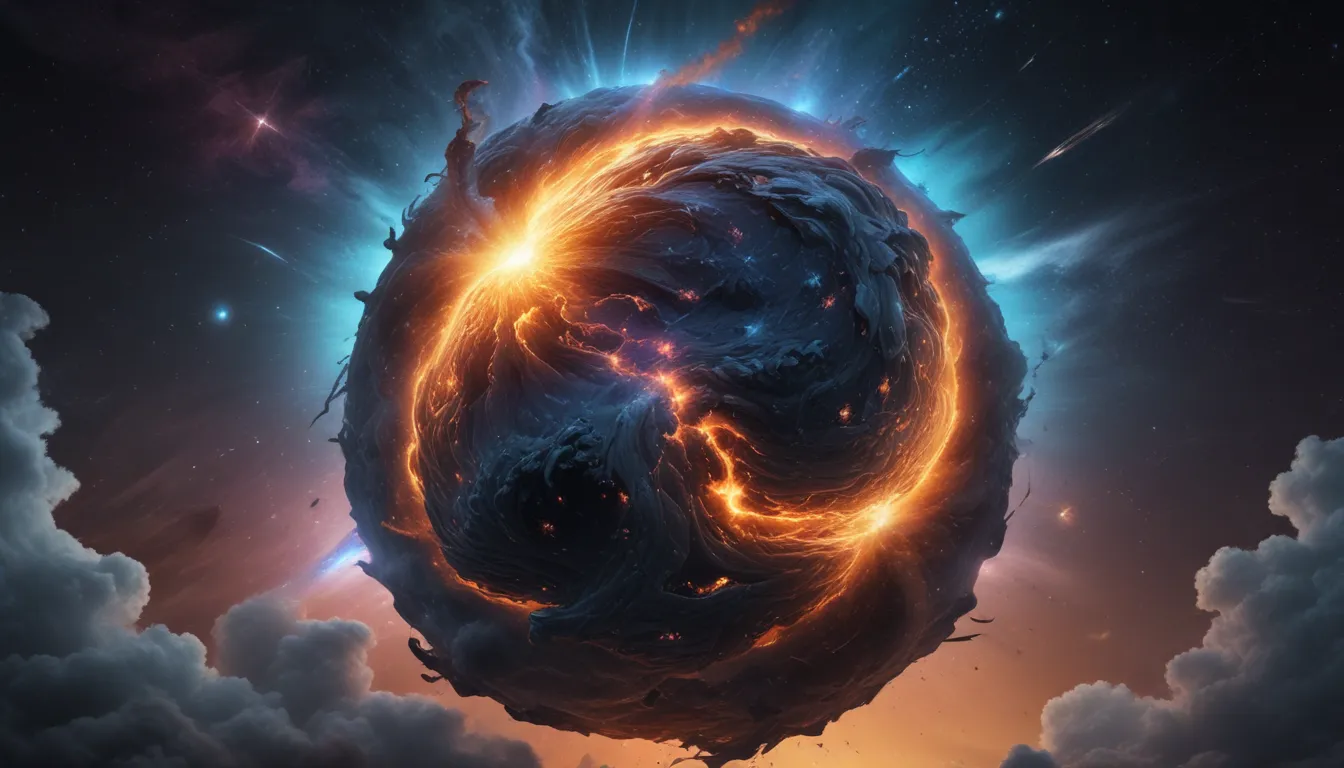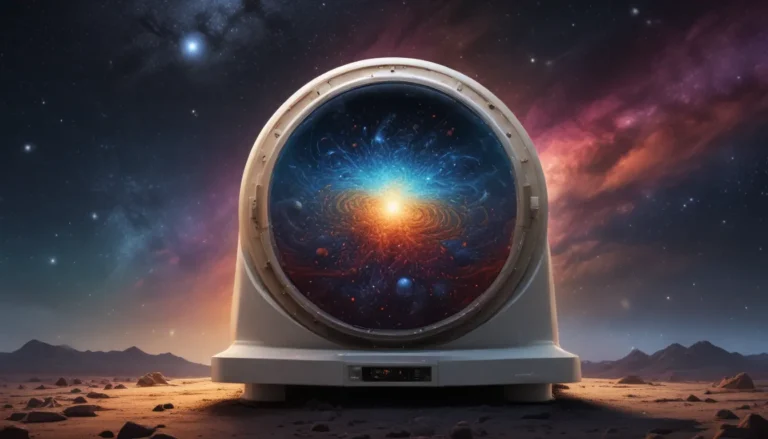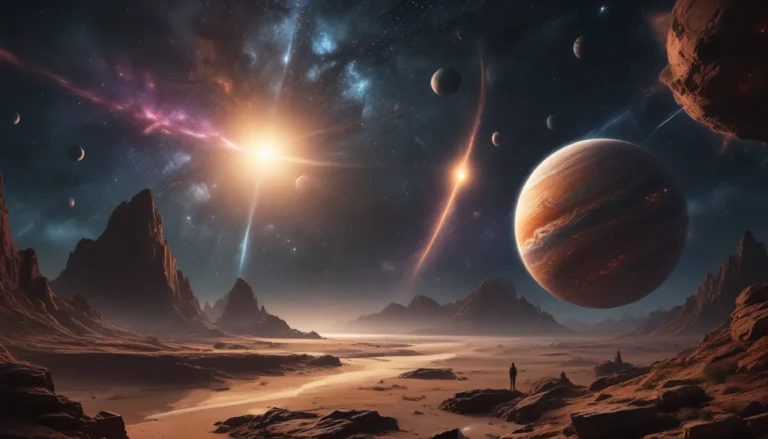The pictures we use in our articles might not show exactly what the words say. We choose these pictures to make you interested in reading more. The pictures work together with the words but don’t take their place. The words still tell you the important facts.
Supernovae, the explosive events that mark the end of a massive star's life cycle, are among the most captivating phenomena in the universe. These cataclysmic explosions release an immense amount of energy and light, offering valuable insights into the evolution of galaxies and the creation of elements essential for life. Let's dive into the mesmerizing world of supernovae and uncover 19 fascinating facts that illuminate the wondrous nature of these cosmic events.
The Enigmatic Universe of Supernovae
Supernovae are not just dazzling celestial fireworks; they are intricate cosmic time capsules that hold secrets about the early universe. Let's explore the key takeaways that shed light on the profound impact of these extraordinary events.
- Supernovae Creation: Explosive events create heavy elements, disperse cosmic dust, and serve as cosmic time capsules, offering valuable insights into the evolution of galaxies.
- Rare Phenomenon: While supernovae are captivating, they are relatively rare, occurring once every hundred years on average in a galaxy.
- Luminous Beings: Supernovae emit up to 100 billion times more light than our Sun, making them the brightest events in the universe that briefly outshine entire galaxies.
- Stellar Recyclers: These cosmic explosions play a crucial role in stellar evolution by dispersing enriched materials into space, enabling the formation of new stars and planetary systems.
Unveiling the Phenomenon: What is a Supernova?
A supernova is a catastrophic explosion that occurs when a massive star exhausts its nuclear fuel, leading to a gravitational collapse and a powerful burst of energy. This mesmerizing celestial event can be seen across vast distances in space, captivating astronomers and stargazers alike.
The Cosmic Light Show: Brightest Light in the Universe
Supernovae illuminate the cosmos with their unparalleled brightness, outshining entire galaxies as they release vast amounts of energy. These dazzling explosions showcase the incredible power and beauty of the universe.
Elements Forged in the Crucible: Supernovae Chemistry
In the fiery aftermath of a supernova explosion, heavy elements such as gold, platinum, and uranium are created through intense heat and pressure. These elements are then scattered throughout the cosmos, enriching the universe with their presence.
Stellar Legacy: Supernovae Remnants
After the initial explosion fades, a supernova leaves behind remnants that can take various forms, including neutron stars, black holes, and supernova remnants. These remnants serve as a testament to the immense energy unleashed during the cosmic event.
Types of Stellar Explosions: Exploring Supernova Varieties
Supernovae are classified into two main types: Type I and Type II. Type I supernovae occur in binary star systems, while Type II supernovae result from the gravitational collapse of massive stars. Each type offers unique insights into the evolution of stars and galaxies.
Cosmic Timekeepers: Supernovae as Astronomical Clocks
Supernovae act as cosmic time capsules, allowing astronomers to study the distant past and gain valuable information about the early universe. By analyzing the light emitted from these explosive events, scientists can unravel the mysteries of cosmic evolution.
The Invisible Power: Neutrinos in Supernova Explosions
During a supernova explosion, an immense number of neutrinos are generated, providing clues to the fundamental properties of matter and the nature of these cataclysmic events. These elusive particles offer a unique perspective on the extreme conditions within a supernova.
Cosmic Dust Factories: Supernovae and Cosmic Dust
Supernovae play a vital role in the creation and dispersion of cosmic dust, tiny particles essential for the formation of planets, stars, and even life itself. These dust particles act as building blocks for the universe, shaping its diverse landscapes.
The Dance of Stars: Supernovae and Stellar Evolution
Supernovae mark the end of a massive star's life cycle, influencing stellar evolution and the dynamics of galaxies. The energy and materials released during these explosive events play a key role in shaping the universe and fostering the birth of new stars.
Unlocking the Mysteries: Supernovae and Gravitational Waves
In rare instances, the collapse of a massive star during a supernova explosion can generate gravitational waves, revealing insights into the dynamics of the event and the nature of gravity itself. These waves provide a window into the extreme physics phenomena at play.
A Celestial Symphony: Stellar Fireworks of Supernovae
The explosion of a supernova presents a mesmerizing light show as material is ejected into space at incredible speeds. This dynamic display captivates astronomers and stargazers, offering a glimpse into the raw power and beauty of cosmic explosions.
The Cosmic Alchemy: Supernovae and Nucleosynthesis
Supernovae are crucial for the creation of elements in the universe through nucleosynthesis. The fusion of lighter elements within a star's core and subsequent explosion distribute heavy elements like carbon, oxygen, and iron throughout the cosmos, laying the foundation for life.
Laboratories of Extreme Physics: Supernovae as Scientific Marvels
Supernova explosions serve as rare opportunities to study extreme physics phenomena, including high-energy particle acceleration, shockwaves, and the behavior of matter under extreme pressures and temperatures. These cosmic laboratories offer valuable insights into the fundamental laws of the universe.
Seeds of Life: Supernovae and Planetary Formation
Thanks to the heavy elements dispersed by supernovae, the ingredients necessary for life, such as carbon, oxygen, and iron, are scattered across the universe. These elements find their way into new planetary systems, providing the building blocks for the emergence of life.
Embracing the Universe: The Awe-Inspiring World of Supernovae
As we delve into the mysteries of supernovae, we are reminded of the incomprehensible power and elegance of the cosmos. These cosmic explosions continue to captivate astronomers and enthusiasts, offering a glimpse into the vastness and beauty of the universe.
Unending Exploration: Journeying into the Depths of Space
The exploration of supernovae is a never-ending quest for knowledge and discovery. With advancements in technology and our understanding of the cosmos, we can anticipate uncovering even more fascinating facts about these stellar explosions in the future. The universe beckons us to embark on a journey of exploration and wonder as we unravel the secrets of supernovae.
Conclusion: Embracing the Marvels of the Universe
Supernovae stand as testaments to the incredible power and complexity of the universe, captivating our imagination and fueling our curiosity. From their role in the creation of elements to their impact on the evolution of galaxies, supernovae continue to shape our understanding of the cosmos. As we gaze upon the vast expanse of the universe, let the awe-inspiring facts about supernovae remind us of the boundless beauty and wonder that surrounds us.
FAQs: Exploring the Universe of Supernovae
- What is a supernova?
-
A supernova is a powerful explosion that occurs at the end of a massive star's life cycle, releasing an immense amount of energy and light.
-
How are supernovae classified?
-
Supernovae are classified into two main types: Type I and Type II, each arising from distinct stellar processes.
-
Are all supernovae visible from Earth?
-
Not all supernovae are visible from Earth, as their visibility depends on factors such as proximity and brightness.
-
Can a supernova cause harm to Earth?
-
While a supernova would need to occur at a specific distance from Earth to cause harm, the likelihood of significant damage is minimal.
-
Do supernovae create new elements?
-
Yes, supernovae are responsible for creating heavy elements and dispersing them into space, enriching the universe.
-
Can a supernova give birth to a black hole?
-
Yes, the collapse of a massive star during a supernova can give rise to a black hole as a remnant.
-
How often do supernovae occur in the universe?
- On average, a supernova occurs once every 50 years in a galaxy the size of the Milky Way, showcasing the rarity of these cosmic events.
As we continue our exploration of supernovae and the vast realm of the universe, let the fascinating facts and intricate details of these cosmic explosions inspire us to marvel at the wonders of the cosmos. Together, we embark on a journey of discovery, unraveling the mysteries of supernovae and unveiling the extraordinary beauty and complexity of the universe.






